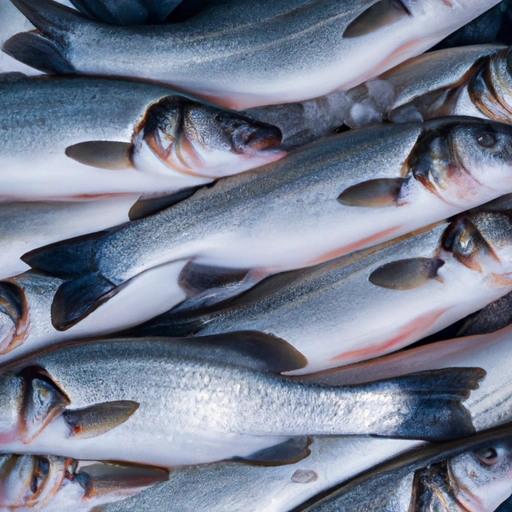Sea Bass
Description

Sea bass is a popular white fish known for its delicate texture and mild, buttery flavor. Enjoyed around the world, this versatile ingredient can be found in various cuisines, making it a favorite among chefs and home cooks alike. Sea bass is available in different species, with the most common being the European sea bass (Dicentrarchus labrax) and the American black sea bass (Centropristis striata).
Common uses
Sea bass is commonly used in a wide range of dishes. It can be grilled, baked, poached, or fried and is often featured in stews, soups, and as main courses. Because of its firm flesh, it holds up well to different cooking methods and seasoning profiles, making it an ideal choice for experimenting with flavors.
Nutritional value
Calories
A 3-ounce (85 grams or about 85 ml) cooked serving of sea bass contains approximately 97 calories.
Protein
Sea bass is a great source of protein, offering about 20 grams per 3-ounce serving.
Fat
This fish is relatively low in fat, with around 2 grams per serving, including beneficial omega-3 fatty acids.
Carbohydrates
Sea bass contains no carbohydrates, making it suitable for low-carb diets.
Vitamins
It provides vitamins such as B6 and B12, essential for energy metabolism and nerve function.
Minerals
Sea bass is rich in minerals like magnesium, phosphorus, and selenium.
Health benefits
Sea bass is known for its high protein content and low-calorie count, making it excellent for weight management. The omega-3 fatty acids contribute to heart health, reducing inflammation and potentially lowering the risk of chronic diseases. It also supports brain health and can help maintain healthy skin and hair.
Potential risks
While sea bass is nutritious, it can contain mercury and other contaminants, especially larger and older fish. It is advisable to consume it in moderation, particularly for pregnant women and young children. Also, be aware of the source of your sea bass, as some farming practices can have negative environmental impacts.
Common recipes
Sea bass is featured in recipes such as sea bass ceviche, roasted sea bass with vegetables, and sea bass in white wine sauce. It's also used in sushi and sashimi.
Cooking methods
Popular cooking methods include grilling over open flames, oven-roasting, pan-searing, steaming, and poaching. Each technique can highlight different aspects of its flavor and texture.
Pairing with other ingredients
Sea bass pairs well with a variety of ingredients, including citrus fruits, herbs like rosemary and thyme, vegetables like asparagus and potatoes, and grains such as rice and quinoa.
Summary
Sea bass is a delectable and nutritious ingredient that adapts to a multitude of cooking styles and flavors. Whether grilled, baked, or poached, it's a wonderful addition to any meal, providing a good dose of protein and essential nutrients. With a rich history and a bright future in the culinary world, sea bass remains a go-to choice for a healthy and satisfying dish.